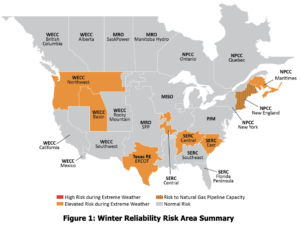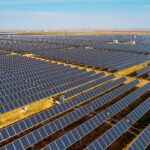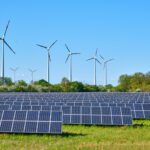Asia now accounts for the most growth in renewable electricity generation, at a whopping 40% of the global production, while Europe and North America are each at 20%, according to the International Renewable Energy Agency (IRENA). Particularly, solar power was at its peak at the start of 2020, with a record-breaking first quarter in the U.S. Then COVID-19 hit, and the industry paused suddenly. Like most sectors, clean energy was not immune to the pandemic’s impact.
Demand decreased, projects were delayed, and jobs furloughed as manufacturing faced slowdowns with supply chain disruptions. Face-to-face sales meetings with customers came to an end. These challenges seeped into Q2, and it became clear: ready or not, 2020 is the year of disruption, and the landscape resulting from COVID-19 is a surefire catalyst.
COMMENTARY
Heading into the last three months of the year, there are many opportunities and challenges the industry is expected to face, as demand picks back up. This comes on the heels of California Gov. Gavin Newsom’s announcement that the state will phase out gasoline-powered cars and reduce demand for fossil fuel in California’s fight against climate change. Read on for an evaluation of the upcoming opportunities and challenges for utilities.
Go Contactless, Be Transparent
COVID-19 has turned the industry on its head. What once depended on in-person canvassing as a large way to generate customer leads has forcefully shifted, as the pandemic struck. Companies had to quickly change their operational methods, while in turn educating their customers on how they plan to keep everyone safe as they deploy clean energy solutions.
As a way to address the new normal, clean energy companies needed to virtualize 80% of the workforce and customer lifecycle, or risk loyalty and disengagement. Through digital, contactless channels, utilities worked to become nimble and adapt to meet both employee and customer needs. To further add to the challenges, the International Energy Agency (IEA) forecasts that additions of renewable electricity capacity will decline by 13% in 2020, when compared with 2019, and are likely to only reach the level of capacity additions of 2019 due to COVID-19. Factors contributing to the reduction include furloughs, limitations stemming from social distancing, financially uncertain customers, and pivoting to navigate the new normal of the remote workforce and utility-customer experience.
Recently in the hot summer months, Pacific Gas & Electric (PG&E) customers have experienced rolling blackouts due to Public Safety Power Shutoffs (PSPS), leaving thousands of homes in the dark. With smartphones and the diversification of communications, customers will demand more timely interactions from utilities through smart business practices, and delivery on the brand’s promise, or they will seek a solution elsewhere. Current events in 2020 have tested customers’ patience and pushed them to new levels of frustration. In 2021, they will only expect more energy security and utility responsibility.
Renewable Energy Optimization Will Grow
Recently, we’ve seen California make great strides for renewable energy. From the governor urging acceleration of the industry, along with the recent executive order on electric vehicles, the state is doubling down on clean power. In order to make these actions a reality not just in the California but across the U.S., companies and governing bodies need to execute unconventional methods to deliver solutions that maximize the performance of clean wind and solar energy for all.
Nationally, the Solar Energy Industries Association is lobbying for tax credit extensions, and streamlining the permitting process. This will encourage more renewable energy system adoption, increasing competition and innovation around the world. Clean energy will become more mainstream in the U.S., especially in California.
In fact, PG&E recently announced a new financial assistance pilot for residential customers installing home battery storage systems through the statewide Self-Generation Incentive Program (SGIP). Approved by the California Public Utilities Commission (CPUC), the new pilot allows eligible customers to install the technology at no cost to them, enabling customers to have more choice and control over their energy. These types of programs are critical to increasing the utilization of clean energy by all.
Companies will compete to design and create more space-efficient systems that deliver on individual customers’ energy needs, including those in larger communities. Finding the right combination of technologies and deployment strategies that minimize the lifecycle cost of clean energy will be vital to increased mainstream adoption.
Strategic Clean Energy Collaboration
With recent wildfire devastation on the West Coast and the continual fight against climate change, companies need to collaborate and create more output efficiency, while shaping the way in which customers consume energy. The fragile electrical grid poses unpredictable challenges to customers, where utilities will need to partner with the right renewable energy investment or product to provide safer and cleaner energy.
Startups are generally too small to scale, and utilities do not have the talent or resources to grow. It’s no longer about working against each other, but instead coming together to produce cleaner energy for generations to come.
Tech giants Amazon and Google have made big pledges on clean energy. Even Walmart is making promises of becoming emission-free by 2040. These commitments by companies to renewable power signals the importance of driving the adoption forward, and they are hoping others follow.
The reality is that many clean energy companies will undoubtedly go under this year as they are unable to quickly adapt to the ever-evolving landscape. But vast opportunity presents itself to those that are able to strategically pivot their business model and approach. This will involve closely monitoring policy, industry climate and customer demand, and consequently digitizing customer experiences and transforming business models to enable full socially distanced project execution, while proactively adjusting to external forces. The virus-induced shock may have led to a slowdown, and bankruptcies loom, but the outlook remains bright and sunny for flexible innovators and visionaries.
—Brett Joerger is CEO of Westhaven Power.










